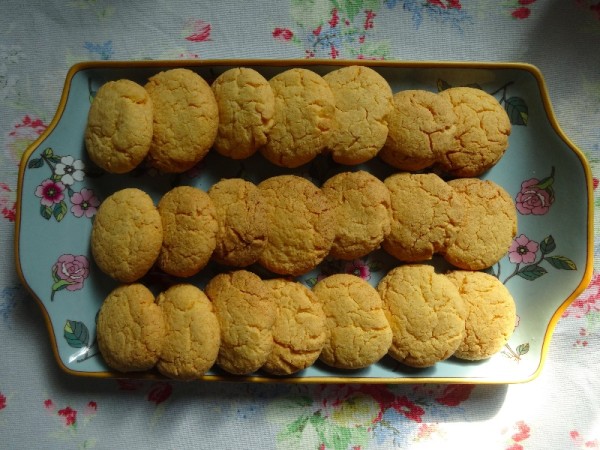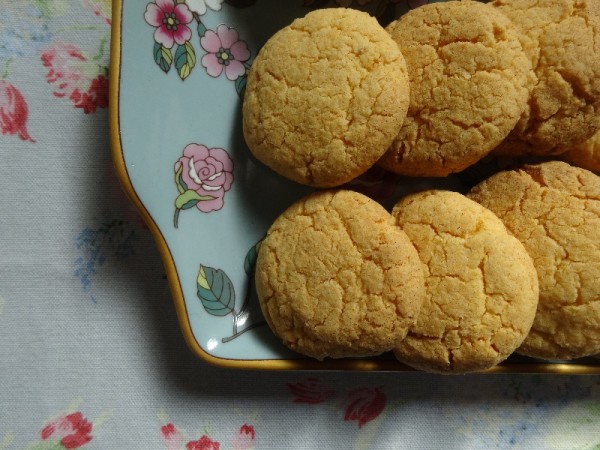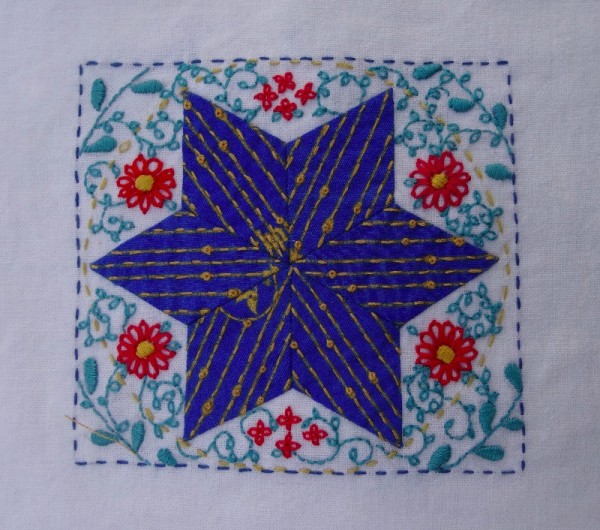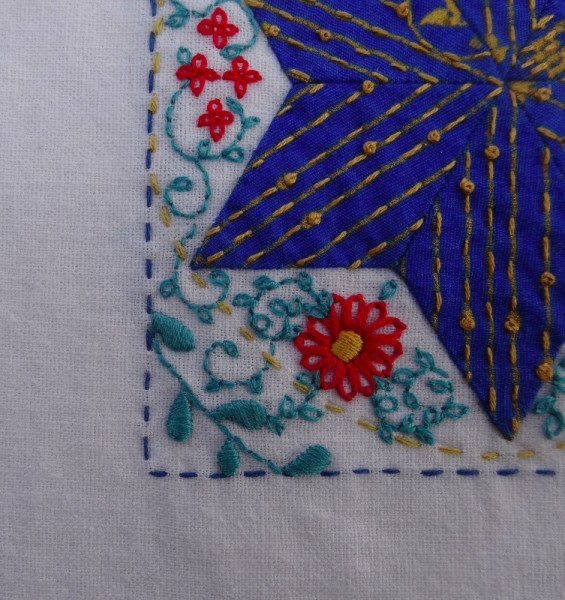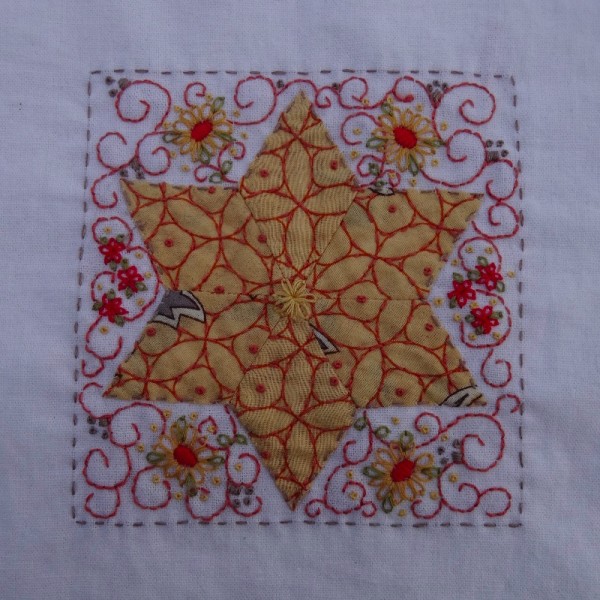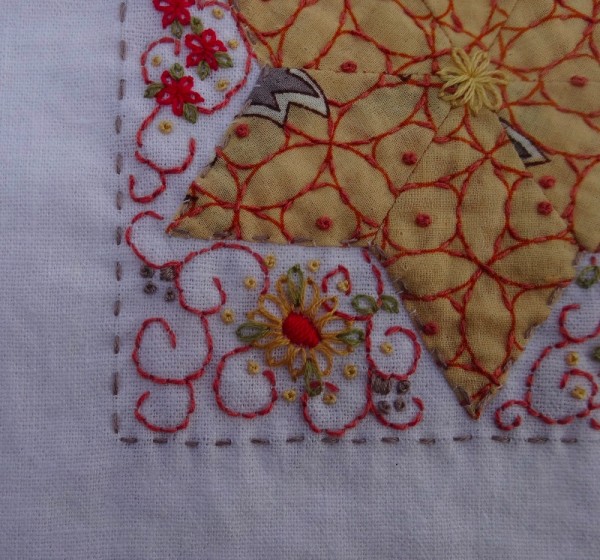This recipe was adapted from the BBC Good Food website and it originally included white chocolate. Quite a nice biscuit though, but not outstanding, I should probably have added the 85g of white chocolate chips the recipe recommended – or perhaps I could have added a mashed banana as we are very fond of bananas and custard.
140 g butter cubed
175 g caster sugar
1 egg
1/2 teasp vanilla extract
225 g self-raising flour
85 g custard powder
Heat oven to 180°/ 160° for fan oven/Gas Mark 4
Line 3 baking sheets with baking parchment.
Cream butter and sugar until light and fluffy. Add egg and vanilla and beat well. Sift in the flour and custard powder and mix until a dough forms.
Roll the dough into little balls, about the size of walnuts and place about 3cm apart on the baking tray, giving them a little press to flatten.
Bake for about 12 minutes until very lightly golden. Remove and cool on a wire rack.
Garden birds are very low key at the moment – they are presumably shivering in the trees as the weather refuses to get much warmer. As if in compensation, larger birds have been more high profile. A local pheasant and his wife strut up and down the road and parade in and out of the back gardens and nascent wheat field beyond. In general pheasants seem rather unintelligent birds, but this couple have obviously worked out that when there’s a shoot nearby, sticking near to houses is a good idea. From time to time the male knocks on the glass door with his beak, perhaps to enquire whether we have seen their egg(s). The vicar had in fact spotted an egg in the flower bed by the back door. At first we thought it was one left over from the Easter egg hunt whose chocolate had turned lighter in the rain and odd hours of sun, but a bit of research has revealed it to be a pheasant egg abandoned or unsuccessfully sat upon. Having just been reading Jemima Puddleduck to the small person, I fear the female pheasant too may be a poor sitter.
At the same time, the front lawn has been the occasional resting place of three Mallard ducks – two drakes and a female – all very companionable and no fighting. But this year there has been no sign of the swans in the oil seed rape where they sit, twenty or thirty together as if they’ve mistaken the ploughed and planted furrows for a the eddies of river water. Curious about this, a little delving reveals that the swans are having a feeding stop over on their migration path and, being grazing animals just like rabbits, cows or deer (just like?), they are quite simply making the most of an easily accessible salad plate.

